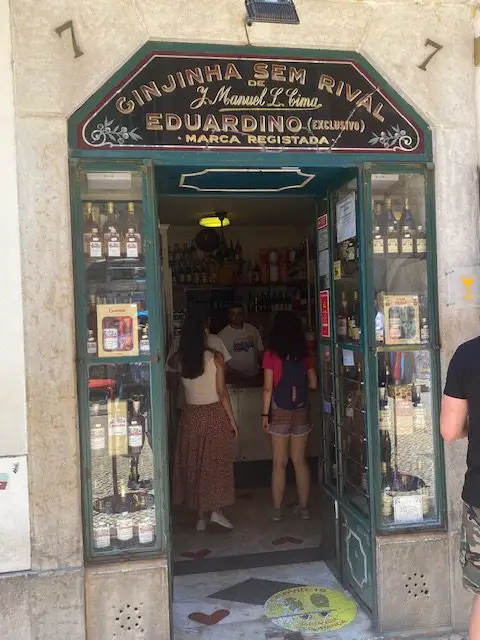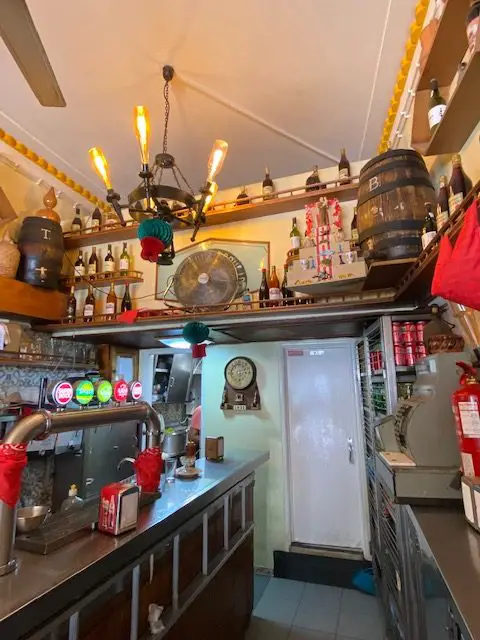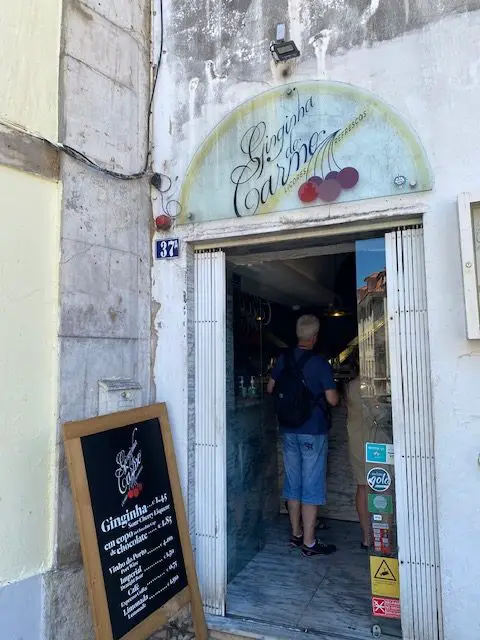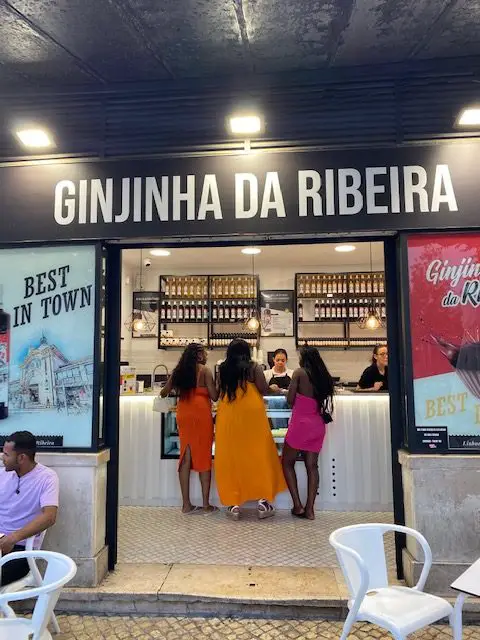Ginjinha is a local liqueur only produced. in Portugal. It is made from ginja berries (which are also known as morello cherries). The drink, which is served in a shot-glass, has a sweet, cinnamony taste.
It is common in Lisbon, Alcobaça, Óbidos, Marvão, Covilhä, and the Algarve.
Approximately 150,000 liters of ginjinha are produced each year. Most of it is consumed in Portugal and about 10% is exported to the United States.
How do you pronounce the word Ginjinha?
Both the G and the J in this word are pronounced like the S in the English word “treasure.” So – ZH.
The letter I is pronounced like the EE in “feet” in English.
NH is like the N in the middle of “onion” in English.
(ZHEEN ZHEEN YUH)
What is the difference between Ginja and Ginjinha?
The berry itself is ginja, and the liqueur is ginjinha, but the two words are often used interchangeably.
What is the history of Ginjinha?
Ginjinha was introduced in Lisbon in 1931, when Francisco Espinheira tried soaking morello cherries in Aguardente (a local brandy, literally – burning water), and adding in sugar and cinnamon.
How to drink Ginjinha
Although the drink is served in a shot glass, it is actually meant to be sipped and savored.
In the town of Óbidos ginjinha is served in an edible chocolate cup, making it a great dessert drink.
When ordering, you get to pick if you want your drink with cherries (com elas) – which of course have been marinating for a while, or without cherries (sem elas).
Ginjinha is a strong drink. Its alcohol content (ABV) is 19% – 24%.
Where to drink Ginjinha
The best way to try ginjinha would be if you had some local friends who were offering you a sip in their home.
If you haven’t made those connections though, the bartenders in the ginjinha houses in Lisbon’s Baixa district will make it happen.
A Ginjinha is a family-owned business on Largo de São Domingos 8 that has been serving the ruby red liqueur for more than 100 years. Open since 1840, this was Lisbon’s first Ginjinha shop.
Hours 9 am – 8 pm.
The tiny shop is only big enough to serve a few customers at a time, but they do have a vintage sink with a foot peddle where you can clean up after you’ve enjoyed your drink (It could get sticky).
Diaganally across from A Ginjinha at Rua das Portas de Santo Antão 7 is Ginjinha Sem Rival, another tiny ginjinha bar that has been in business since 1890. Open 7am – midnight. Both of these tiny bars are located in the Baixa District.

Ginjinha Rubi (Rua de Barros Queirós 29) The walls are done in blue and white azulejo tile at this little bar that has been selling ginjinha since 1931. (7 am – 10:30 pm)
Ginjinha Popular This small tavern has operated on Rua das Portas de Santo Antão since 1932.

Ginjinha do Carmo is the newest and most up-scale of the ginjinha shops that I will mention, but don’t worry – a shot of ginjinha here will only set you back €1.35. They also sell ginjinha in a chocolate cup here for €1.85.

Located under the stairs at Calçada do Carmo 37A near the Convento do Carmo. If coming from Baixa, it is located behind the Rossio Train Station. Open 1 pm – 9 pm. It
Website: Online store | Ginginha do Carmo
Ginjinha da Ribeira at the Time Out Market

Rua Don Luís I, at the Time Out Market
This shop is located on the exterior of Lisbon’s Mercado da Ribeira, or Time Out Market food hall. You can have a traditional shot of ginjinha for 1.50€.
Or you could choose a shot served in a chocolate cup for the same price.
For 2.10€, you can have a shot of ginjinha in a choclate cup and a pastel de nata. To learn more about this sweet pastry, see my article The big difference between Pastéis de Belém and Pastéis de Nata They also have beer, toasts, croissants, and cheeseboards on the menu and they offer outdoor seating in an area that is great for people-watching.
Also, if you are interested in trying some of the many wines that Portugal is famous for, read my article, A quick guide to wine bars, wine tours, and wine tastings in Lisbon
If you want to get to the root of Portuguese wines, you should go see a vineyard at one of these 18 wineries and vineyards you can visit near Lisbon, Portugal
Thank you for reading this article. Know that I am not associated with any businesses mentioned here.